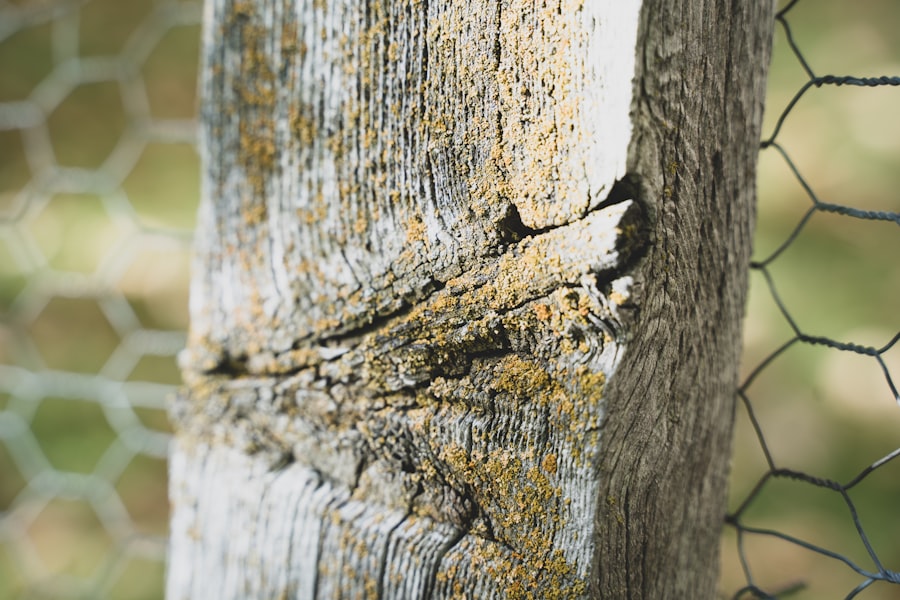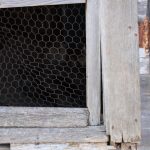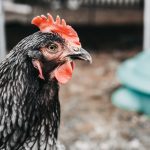Chicken safety and security require an understanding of their specific needs and behaviors. Chickens are natural foragers with a curious nature, often exploring their environment in search of food and stimulation. They also possess an innate instinct to roost at night, seeking elevated and secure locations for rest.
These behavioral traits are essential considerations when designing a chicken fence, as they inform the creation of an enclosure that meets the chickens’ needs while providing protection from potential predators. Chickens also require access to fresh air, sunlight, and adequate space for movement. An effective chicken fence should offer sufficient area for the birds to roam and explore, while simultaneously ensuring protection from predators and other hazards.
By comprehending the requirements of chickens, one can design a fence that not only ensures their safety and security but also promotes their overall health and well-being.
Table of Contents
- 1 Choosing the Right Type of Fence
- 2 Determining the Height of Your Fence
- 3 Factors to Consider When Deciding Fence Height
- 4 Additional Measures to Secure Your Chicken Enclosure
- 5 Maintaining and Monitoring Your Chicken Fence
- 6 Ensuring the Safety and Well-being of Your Chickens
- 7 FAQs
- 7.1 What height should a fence be to keep chickens in?
- 7.2 Why is a 6-foot fence recommended for keeping chickens in?
- 7.3 Are there any other factors to consider when choosing a fence height for chickens?
- 7.4 Can certain breeds of chickens fly over a 6-foot fence?
- 7.5 What are some alternatives to a tall fence for keeping chickens in?
Key Takeaways
- Understanding the needs of your chickens is crucial for choosing the right type of fence
- When choosing the right type of fence, consider factors such as predator types in your area and the size of your chicken enclosure
- Determining the height of your fence should take into account the jumping and climbing abilities of potential predators
- Factors to consider when deciding fence height include the size and breed of your chickens, as well as the presence of flying predators
- Additional measures to secure your chicken enclosure may include adding a roof or apron to prevent predators from digging under the fence
- Regular maintenance and monitoring of your chicken fence is essential for ensuring the safety and well-being of your chickens
- Ensuring the safety and well-being of your chickens requires careful consideration of their needs and potential threats, as well as proactive measures to secure their enclosure.
Choosing the Right Type of Fence
Traditional Wire Mesh Fences
One popular choice is a traditional wire mesh fence, which provides excellent visibility and ventilation while also offering protection from predators.
Wooden Fences and Electric Fences
Another option is a wooden fence, which can provide a more aesthetically pleasing look while still offering the necessary protection for your chickens. Electric fences are also a popular choice for chicken enclosures, as they provide a strong deterrent to predators while also being relatively easy to install and maintain.
Considering the Spacing and Size of the Fence
In addition to the type of material used, it’s important to consider the spacing of the fence. For example, if you have smaller breeds of chickens, you may need a fence with smaller gaps to prevent them from escaping. On the other hand, larger breeds may require a taller fence with larger gaps to allow for better ventilation and visibility. Ultimately, the right type of fence for your chicken enclosure will depend on your specific needs and the size and breed of your chickens.
Determining the Height of Your Fence

The height of your chicken fence is a crucial factor in ensuring the safety and security of your flock. A well-designed fence should be tall enough to prevent predators from jumping or climbing over it, while also providing enough space for the chickens to move around comfortably. When determining the height of your fence, it’s important to consider the size and breed of your chickens, as well as the potential threats in your area.
In general, most chicken fences should be at least 6 feet tall to deter common predators such as foxes, raccoons, and dogs. However, in areas with larger predators such as coyotes or bears, a taller fence may be necessary. Additionally, if you have breeds of chickens that are known for their ability to fly or jump, you may need to consider adding a roof or cover to prevent them from escaping.
By carefully considering the height of your fence, you can ensure that your chickens are safe and secure within their enclosure.
Factors to Consider When Deciding Fence Height
When deciding on the height of your chicken fence, there are several factors to consider to ensure the safety and security of your flock. One important factor is the type of predators in your area. For example, if you live in an area with a high population of coyotes or other large predators, you may need a taller fence to provide adequate protection for your chickens.
On the other hand, if your area is primarily populated by smaller predators such as raccoons or foxes, a shorter fence may be sufficient. Another factor to consider is the size and breed of your chickens. Some breeds are known for their ability to fly or jump, so a taller fence may be necessary to prevent them from escaping.
Additionally, if you have smaller breeds of chickens, you may need a fence with smaller gaps to prevent them from squeezing through. By carefully considering these factors, you can determine the appropriate height for your chicken fence and ensure that your flock is safe and secure.
Additional Measures to Secure Your Chicken Enclosure
In addition to choosing the right type and height of fence for your chicken enclosure, there are several additional measures you can take to further secure the area and protect your flock from potential threats. One effective measure is to bury wire mesh or hardware cloth around the perimeter of the fence to prevent predators from digging underneath. This can be especially important in areas with a high population of burrowing predators such as foxes or raccoons.
Another measure to consider is adding a roof or cover to your chicken enclosure. This can help prevent aerial predators such as hawks or owls from swooping down and attacking your chickens. Additionally, adding motion-activated lights or sound devices can help deter nocturnal predators such as raccoons or opossums.
By taking these additional measures, you can further secure your chicken enclosure and provide additional protection for your flock.
Maintaining and Monitoring Your Chicken Fence

Fence Inspection and Repair
Regularly inspect your chicken fence for any signs of damage or wear, such as holes or loose wires. Make any necessary repairs promptly to ensure the fence remains secure and effective.
Predator Detection and Deterrence
Regularly check for any signs of potential predators in the area, such as tracks or droppings. Take appropriate measures to deter them from approaching the enclosure, ensuring your chickens remain safe and protected.
Monitoring Chicken Behavior
Keep a close eye on the behavior of your chickens within the enclosure. Watch for any signs of stress or agitation, which could indicate that they feel threatened by potential predators. By monitoring their behavior, you can identify any potential issues and take corrective action.
By following these steps, you can ensure your chicken fence continues to provide effective protection for your flock and promote their overall well-being.
Ensuring the Safety and Well-being of Your Chickens
In conclusion, designing a secure and effective chicken fence is crucial for ensuring the safety and well-being of your flock. By understanding the specific needs and behaviors of your chickens, choosing the right type and height of fence, and taking additional measures to secure the enclosure, you can create a safe and comfortable environment for your chickens to thrive. Regular maintenance and monitoring of the fence will help ensure that it continues to provide adequate protection for your flock.
By taking these steps, you can provide your chickens with a secure and happy home while also giving yourself peace of mind knowing that they are safe from potential threats.
If you’re considering keeping chickens, you may also be wondering how tall of a fence you need to keep them contained. According to a helpful article on Poultry Wizard, “Can Guinea Fowl Live with Chickens?” Poultry Wizard discusses the importance of having a secure fence to keep chickens and other poultry safe from predators. It’s important to consider the height of the fence to prevent chickens from flying over and to keep out potential threats.
FAQs
What height should a fence be to keep chickens in?
The recommended height for a fence to keep chickens in is at least 6 feet tall. This will prevent most breeds of chickens from flying over the fence.
Why is a 6-foot fence recommended for keeping chickens in?
A 6-foot fence is recommended to prevent most breeds of chickens from flying over the fence. It also helps to deter predators from entering the chicken enclosure.
Are there any other factors to consider when choosing a fence height for chickens?
In addition to the height of the fence, it’s important to consider the material and construction of the fence. The fence should be sturdy and secure to prevent predators from digging under or breaking through.
Can certain breeds of chickens fly over a 6-foot fence?
Some breeds of chickens, such as certain game breeds, may be able to fly over a 6-foot fence. In these cases, additional measures such as clipping their wings or using netting may be necessary to keep them contained.
What are some alternatives to a tall fence for keeping chickens in?
Some alternatives to a tall fence for keeping chickens in include using chicken wire or hardware cloth to create a secure enclosure, using electric fencing, or using netting to cover the top of the chicken area. These options can be effective in keeping chickens contained.
Meet Walter, the feathered-friend fanatic of Florida! Nestled in the sunshine state, Walter struts through life with his feathered companions, clucking his way to happiness. With a coop that’s fancier than a five-star hotel, he’s the Don Juan of the chicken world. When he’s not teaching his hens to do the cha-cha, you’ll find him in a heated debate with his prized rooster, Sir Clucks-a-Lot. Walter’s poultry passion is no yolk; he’s the sunny-side-up guy you never knew you needed in your flock of friends!







